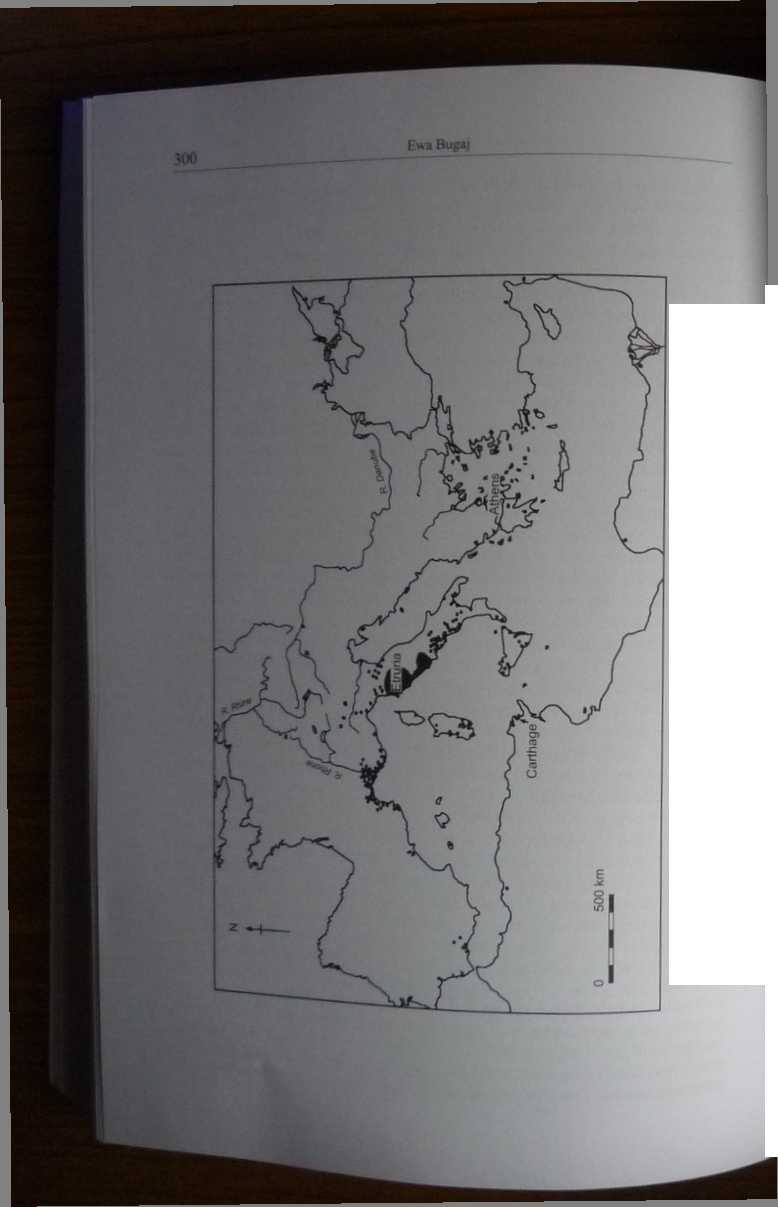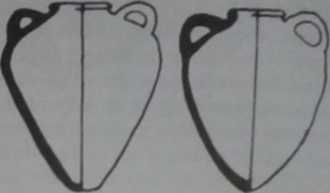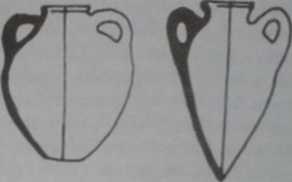P1190372

Fig. 4. Distribution of ihc hucchero in Etrurio. Meditemncan and bcyond (afler von Hue 1989:329; dnwn by M. Gor.iczni.ik)
H which were probably originally filled M oiU winę and tar, then some Greek ind Phoenician amphorac, and thin-wal-■Hararc mainly for oils and perfumes (anballoi), most of them in a Corinthian


and finally a magnificently oma-mented bronze Corinthian helmet (Spivey 1997, Figs 6-10). The rest of the load was metal orc - lend, copper and iron - and 9jRU products such as bronze arrow heads and lead fishing weights (obviously we arc not ablc to ascertain the quantity of organie materials carried by the ship).

Fi*.
5. Typc* of I mneon amphorac (alWr Grm 1999: 93. drawn by M GoącaHal)
However, that ship provides also some Wy importom information about flow of ideology which had a great influence on contcmporary lifestyle. During cxplora-tion of the wreck archaeologists found a tablet used for writing down tcxts, seve-ral musical instruments (flutes), pieces of kline and a silver jug. These might have becn the captain’s or crew’s possessions and prove high social status of the owners. knowlcdgc of writing (which in those limes was limited to elites). and madę up equipment worth participants of a sym-posium (Spivey 1997: 17-18). Therefore nusiness contacts were not limited to flow of commodities and raw materials, but most of all allowcd flow of various pat-tems and cultural ideas. As long as eon- | tacts with Grecks are concemed (particu-Iarly with those from Corinth and Asia Minor), they were cxccptionalI\ intensn o in 6* and the first half of 5lh cent. It is shown by assimilation of Greek customs I- scholars notę that at that time various games, sports compctitions. hunting and luxurious clothing became popular with Etruscan aristocrucs \loreover. not only elements of arms and armour were adopted (e.g.: Corinthian hclmcts. shields and leg-guards) but also flghting tactics and customs connccted w ith celebrating fcasts with a usc of identical cquiptncnt which appeared in the contcst of Greek synipo-siums (Turfa 1986: 72).
Retuming to the compIcxity of Etruscan sea tradc. w hich w as discusscd be-forc> it is worth noting. that it not only consisted in carrying on an eachange of varióus goods from many region* of the Mediterrancan Basin. Importani was also
Wyszukiwarka
Podobne podstrony:
DSC07875 (3) Fig. 1. Distribution of inland dunes in Poland 1 - dunes and sand areas (Galon 1958), 2
Fig. 1 Age distribution of 73 butchers in western Sweden 1981 Neck £ łbowi Low
Zdjęcie079(3) — Germany-Poland border Fig. 1. Distribution of Kupferschiefer copper deposits in Pola
Slajd68 Bielactwo - kamuflaż Fig. 3.9.2 (a-d)Camouflaging of facia I vrtiligo in Iwo dark skinned pa
Slajd68 Bielactwo - kamuflaż Fig. 3.9.2 (a-d)Camouflaging of facia I vrtiligo in Iwo dark skinned pa
148H. Pondel Shamsham S., Roszyk E. Distribution of Selected Metals in the Profiles of Culti vated S
80 (129) 154 The Viking Age in Denmark Figurc 44 Distribution of Arabie coins in a sam ple of north-
81 (117) 156 The Viking Age in Denmark Figurę 46 Distribution of Arabie coins in a samplc of castcrn
82 (123) 158 The Viking Age in Denmark Figurc 48 Distribution of Arabie coins in an carly tenth-cent
83 (120) 160 The Viking Age in Denmark Figurc 50 Distribution of Arabie coins in a late tenth-centur
DSCI3125 so18. Formulate the rule(s) responsible for the distribution of IM variants in the data
Figurę 1-2.Distribution of Armored Vehicles in an Armored Combat Brigade(Number of
DSCN6550 (2) Distribution of viscerai leishmaniańs in Africa due to Leishmemia donovani donorani and
więcej podobnych podstron